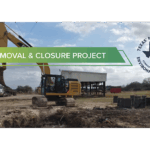
In the realm of environmental due diligence, Phase 1 Environmental Site Assessments play a crucial role in assessing potential risks and liabilities associated with a property. For individuals and businesses in Laredo, understanding the complexities and importance of such assessments is paramount. This article aims to shed light on the various facets of Phase 1 Environmental Site Assessments specific to the Laredo region.
Understanding Phase 1 Environmental Site Assessments
The Purpose of Phase 1 Assessments
Before delving into the intricacies of Laredo-specific assessments, it is essential to comprehend the purpose behind Phase 1 Environmental Site Assessments. In simple terms, these assessments are conducted to evaluate the likelihood of environmental contamination on a property, thus identifying potential risks for the purchaser or owner.
By thoroughly examining historical records, conducting site inspections, and gathering relevant information, Phase 1 assessments aim to provide an accurate snapshot of the property’s environmental condition. This knowledge empowers stakeholders to make informed decisions and take necessary actions to mitigate risks.
Understanding the purpose of Phase 1 assessments is crucial, as it highlights the importance of due diligence in real estate transactions. It ensures that potential buyers or property owners are aware of any environmental liabilities associated with the property, allowing them to negotiate fair terms and protect their investment.
Key Components of Phase 1 Assessments
A Phase 1 Environmental Site Assessment comprises several key components that collectively contribute to a comprehensive evaluation of a property’s environmental condition. These elements include:
- Initial site inspection: An environmental professional visits the property to conduct a thorough visual examination. This inspection involves assessing potential sources and signs of contamination, such as chemical storage areas, waste management practices, or underground storage tanks.
- Historical research: Comprehensive research is conducted to gather information about the property’s past usage and surrounding areas. This involves examining historical maps, aerial photographs, city directories, and government records to identify any potential environmental concerns.
- Report compilation: The final deliverable of a Phase 1 Environmental Site Assessment is a detailed report. This report includes a summary of findings, analysis of potential risks, and recommendations for further action if required.
Each component plays a crucial role in the assessment process, ensuring a thorough evaluation of the property’s environmental condition. The initial site inspection allows for a firsthand assessment of potential contamination sources, providing valuable insights into the property’s current state. Historical research, on the other hand, uncovers the property’s past usage, shedding light on any potential environmental concerns that may have arisen from previous activities.
Once all the necessary data has been gathered and analyzed, a detailed report is compiled. This report serves as a comprehensive document that summarizes the findings of the assessment, identifies potential risks, and provides recommendations for further action if required. It serves as a valuable resource for stakeholders, enabling them to make informed decisions and take appropriate measures to address any identified environmental issues.
The Process of Conducting Phase 1 Assessments in Laredo
Initial Site Inspection
Upon initiating a Phase 1 assessment in Laredo, environmental professionals conduct an on-site inspection to meticulously evaluate the property. This inspection primarily focuses on visual assessments of potential contamination sources, including storage areas, waste management practices, and underground storage tanks. Engaging the services of qualified professionals ensures a detailed and accurate inspection process.
Historical Research
Historical research constitutes a vital stage in the Phase 1 assessment process. For Laredo properties, this includes examining historical maps, photographs, city directories, and government records. These records provide valuable insights into past land usage, potential sources of contamination, or nearby properties that may impact the assessment.
Thorough historical research enables environmental professionals to identify red flags and areas of concern, helping stakeholders make informed decisions and take necessary measures to address potential risks before they become detrimental.
Report Compilation
Upon completing the site inspection and historical research, environmental professionals compile a comprehensive report summarizing their findings and recommendations. The report is a valuable resource for buyers, sellers, or property owners, offering an informed perspective on the property’s environmental condition and any associated risks.
By presenting clear and concise information, a well-documented report helps stakeholders navigate the complexities of environmental assessments and paves the way for informed decision-making.
Regulatory Framework for Environmental Site Assessments
Federal Regulations and Standards
Phase 1 Environmental Site Assessments follow a regulatory framework established by various federal entities, including the U.S. Environmental Protection Agency (EPA). Compliance with these federal regulations ensures a standardized approach to environmental due diligence.
The EPA’s All Appropriate Inquiry Rule, as outlined in 40 CFR Part 312, serves as a guideline for conducting Phase 1 assessments. Adhering to these regulations is essential to meet legal requirements and safeguard against potential liabilities.
Texas State-Specific Regulations
In addition to federal regulations, Phase 1 Environmental Site Assessments conducted in Laredo must comply with Texas state-specific regulations. The Texas Commission on Environmental Quality (TCEQ) plays a crucial role in establishing and enforcing environmental policies within the state.
Knowledge of these state-specific regulations is imperative for environmental professionals conducting assessments in Laredo, as they offer guidance on local requirements and ensure compliance with Texas laws.
Common Findings in Laredo Phase 1 Assessments
Potential Environmental Concerns
Phase 1 Environmental Site Assessments frequently uncover potential environmental concerns specific to Laredo. These concerns may vary depending on the property’s location, historical usage, or neighboring properties.
Contaminants of concern can include hazardous substances, petroleum products, or other pollutants that could pose risks to human health or the environment. Identifying these concerns is crucial for stakeholders to take appropriate measures to address and mitigate potential risks.
Impact on Property Value and Use
Environmental issues uncovered during a Phase 1 assessment can significantly impact a property’s value and use. Environmental contamination can limit the property’s marketability and potential uses, potentially resulting in financial losses for owners or limitations on future property development.
By understanding these potential impacts, stakeholders can evaluate the financial implications and make informed decisions regarding property transactions or the implementation of remediation strategies.
Moving Forward After a Phase 1 Assessment
Phase 2 Environmental Site Assessments
A Phase 1 Environmental Site Assessment primarily serves as a tool for identifying potential risks and liabilities. In cases where concerns are identified, stakeholders may proceed with a Phase 2 assessment to obtain more detailed information.
Phase 2 assessments involve sample collection, laboratory analysis, and further investigation to determine the presence and extent of contamination. The results of a Phase 2 assessment provide stakeholders with a more detailed understanding of the property’s condition, facilitating informed decision-making and appropriate actions.
Remediation and Mitigation Strategies
If environmental concerns are identified during a Phase 1 assessment, implementing remediation and mitigation strategies becomes crucial. These strategies aim to address and alleviate potential risks, ensuring the protection of human health and the environment.
Engaging qualified environmental professionals with expertise in remediation strategies is vital for developing an effective plan. These strategies may include containment, removal, treatment, or monitoring activities, tailored to the specific circumstances of the property.
In conclusion, Phase 1 Environmental Site Assessments serve as a crucial component of environmental due diligence in Laredo. By understanding the purpose, components, and process of these assessments, stakeholders can navigate the complexities of environmental site assessments and make informed decisions regarding property transactions. Compliance with federal and state-specific regulations, along with the implementation of remediation and mitigation strategies when necessary, ensures a proactive approach towards environmental stewardship and sustainable property management.
As you consider the importance of Phase 1 Environmental Site Assessments in Laredo, remember that the right expertise is crucial for thorough due diligence and risk management. ESE Partners is dedicated to guiding you through the complexities of environmental assessments and ensuring compliance with all regulatory standards. Our experienced team stands ready to support your needs with tailored solutions in assessment, remediation, and compliance. Don’t let environmental concerns stand in the way of your business progress. Request A Proposal today and partner with us to responsibly move your business forward.








